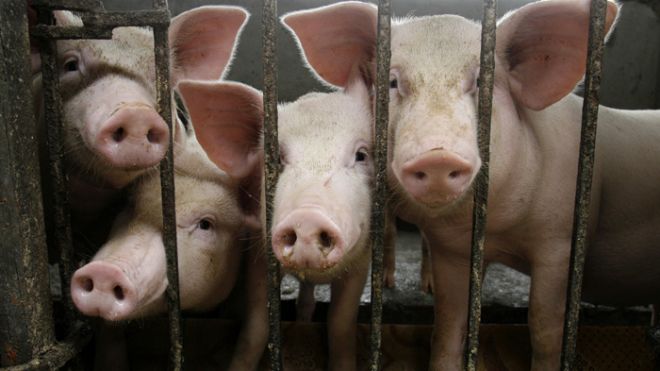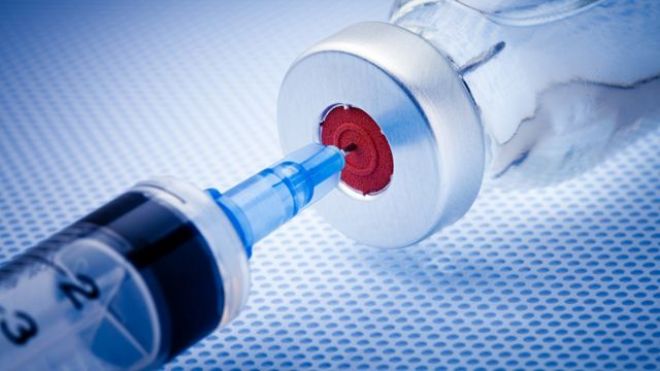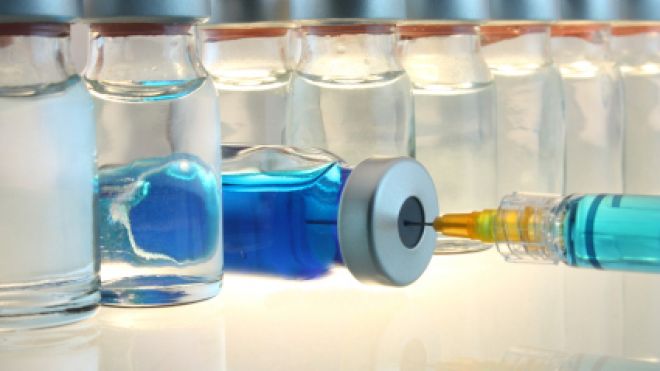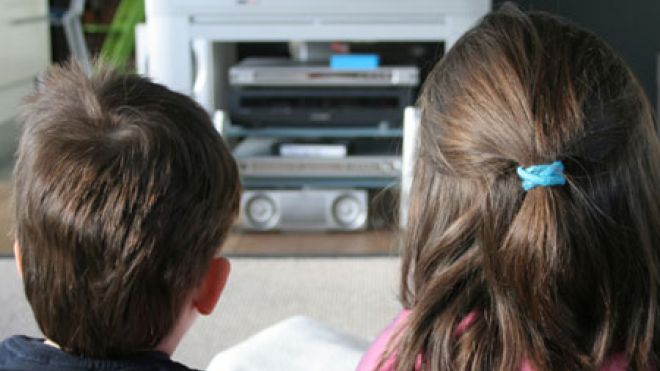
The sudden and widespread appearance of a swine virus deadly to young pigs - one never before seen in North America - is raising questions about the bio-security shield designed to protect the U.S. food supply. The swine-only virus, the Porcine Epidemic Diarrhea Virus (PEDV), poses no danger to humans or other animals, and the meat from infected pigs is safe for people to eat. Though previously seen in parts of Asia and Europe, the virus now has spread into five leading hog-raising U.S. states. How it arrived in the United States remains a mystery. While the U.S. imports millions of pigs each year from Canada, it imports pigs from virtually no other country, and no Canadian cases of PEDV have been confirmed. Veterinarians and epidemiologists say pigs are infected through oral means, and that the virus is not airborne and does it not occur spontaneously in nature. In recent years, with the emergence of dangerous pathogens such as H1N1, also known as swine flu, and bovine spongiform encephalopathy (BSE) or mad cow disease, the United States and other countries have sought to secure defenses both on the farm and at the national borders to protect against barnyard epidemics. “We're just trying to get a handle on what's happening,” said Tom Burkgren, executive director of the American Association of Swine Veterinarians. “It's like drinking water out of a fire hose. We're getting hits from all over the place.” Overall numbers of confirmed cases and mortality rates are not yet available, though anecdotal evidence suggests there are devastating losses for farms that are hit. “If you've got it, it's bad,” said Mark Greenwood, vice president of agri-business capital at AgStar Financial Services, who said none of his clients have been affected. “I spoke to a farmer in the Midwest who had it show up in a 2,000-head barn of pigs, and had a 40 percent death loss.” A spokeswoman for U.S. Department of Agriculture's Animal and Plant Health Inspection Service told Reuters the agency is working with state agencies and pork industry officials to discover where the virus originated. THE VIRUS SPREADS Confirmed cases have been reported in five hog-raising states including Iowa, the largest U.S. hog producer with 20 million hogs, according to the USDA. While only seven farms have had confirmed cases since May 17, more cases are expected as labs sift through samples, say sources investigating the outbreak. Colorado, Indiana, Illinois and Minnesota reportedly have positive tests for PEDV, according to state veterinarians and agriculture department officials, and the National Veterinary Services Laboratory in Ames, Iowa. PEDV, most often fatal to very young pigs, causes diarrhea, vomiting and dehydration. It also sickens older hogs, though their survival rate tends to be high. Known as a “coronavirus” because of the crown-like spikes on its surface, the virus afflicted China in recent years and killed more than 1 million piglets. PEDV is spread most commonly by pigs ingesting contaminated feces. Investigators are focused on physical transmission, perhaps a PEDV infected pig, equipment marred with feces, or even a person wearing dirty boots or with dirty nails. The mystery about how the virus entered the United States is raising concern about potential holes in the bio-security shield designed to protect the U.S. food and farming sectors. “Like everything else, we screw up from time to time,” said Ronald L. Plain, professor of agricultural economics at University of Missouri in Columbia, Missouri. “We know so little about the transmittal of this virus. We can't be sure if it's happening because of something we're supposed to do right and didn't - or by some mechanism we don't know that we're supposed to do differently.” Initial reporting about the virus may have been delayed, say sources, because its symptoms can be confused with a more common malady, transmissible gastroenteritis (TGE). Also, states are not required to report cases of PEDV to the federal government, and farmers are not required to report to state veterinarians. As part of its assessment of the situation, USDA will email epidemiological surveys to swine veterinarians who are dealing cases of PEDV. Meanwhile, the veterinarians are sending samples to diagnostic labs, where technicians are scrambling gathering the tools needed to check the samples for PEDV - supplies many labs did not have prior to the outbreak. While most farmers are taking a wait-and-see approach, some told Reuters they are turning away unnecessary visitors and double checking to ensure their safety protocols are being followed. LOOKING NORTH The search for leads also has turned to the nation's borders and ports of entry - specifically, Canada, where the United States imported 5.7 million head of live hogs last year. Canada has never had a confirmed case of the virus, though it does not test for it, government officials said. “Canada has very effective import measures in place to address this risk,” said Dr. Rajiv Arora, senior staff veterinarian for the Canadian Food Inspection Agency's foreign animal disease section. Canada can import live breeding pigs, under permits, from either the United States or the European Union, Arora said. The animals are quarantined by CFIA for a period of time, then inspected and tested - although not for PEDV - before released. Canada imported C$1.7 million ($1.6 million) worth of live swine in 2012, including both slaughter-ready and breeder pigs, according to Canada's Agriculture Department. CHINA HARD HIT Veterinarians and agricultural epidemiologists in the United States are drawing grim lessons from the devastating effect PEDV has had in other countries where it has hit. The first reports of suspected PEDV came in 1971 in the United Kingdom. As years passed, PEDV spread across parts of Europe and Asia. Veterinary researchers later concluded that lax bio-security measures contributed to PEDV's spread in Asia. One of the worst known outbreaks of the virus hit China's pig herds in late 2010, according to the Centers for Disease Control and Prevention's Emerging Infectious Diseases Journal. Vaccines had limited effectiveness and PEDV over ran southern China killing more than 1 million piglets. The death rate for virus-infected piglets ranged from 80 percent to 100 percent. Biosecurity measures in the U.S. food supply have been beefed up over the years, and especially after the outbreaks of mad cow disease and swine flu. Both outbreaks posed risks to human health. Today, trucks carrying live animals are supposed to be cleaned before entering and leaving farms. At commercial hog operations, visitors routinely shower and change clothing before stepping into a barn. Overseas visitors typically wait several days before being in the presence of a commercially raised hog. But the food shield is not impermeable. “If it becomes clear that this is not a novel way for to be transmitted, and that there had to be physical contact, that's going to be a major concern,” said William Marler, a leading food-safety attorney. “It means that there was a failure in the system.”source : http://www.foxnews.com/health/2013/05/29/pork-industry-hunts-for-deadly-pig-virus/






